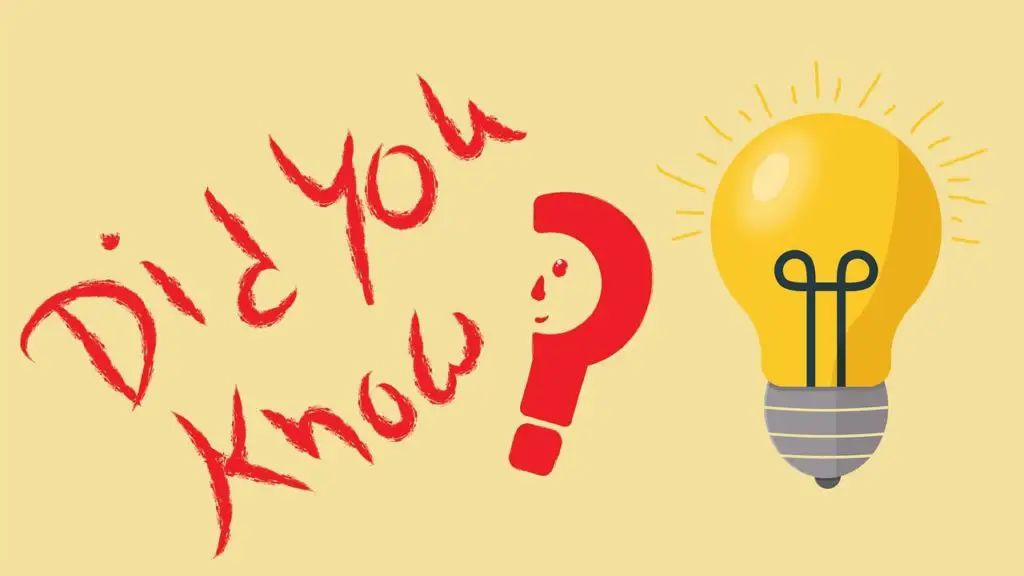The wisdom, “Those unable to recall history are doomed to relive it,” articulated by philosopher George Santayana, holds significance even in our technologically advanced era. Remarkably, the New York Public Library has brought a piece of the past to the digital forefront by digitizing 100 “How to Do It” cards, originally found in cigarette boxes in the early 1900s.
Decades ago, collectible cards were a staple in cigarette packaging, ranging from celebrity endorsements to various advertisements. Gallaher Cigarettes, a UK-based entity, innovated by using these inserts to offer ‘life hacks’—helpful household tips and tricks. Despite the acknowledged health risks associated with smoking, it’s undeniable that these innovative tidbits offered practical utility in everyday life back then.
We’ve carefully selected the most ingenious and still-relevant life hacks from these century-old tokens for both your enjoyment and benefit. These authentic images, complete with their original instructional narratives, offer a captivating insight into the everyday ingenuity of the past. Let’s explore these intriguing historical snapshots.
Hack #1: Removing a Splinter
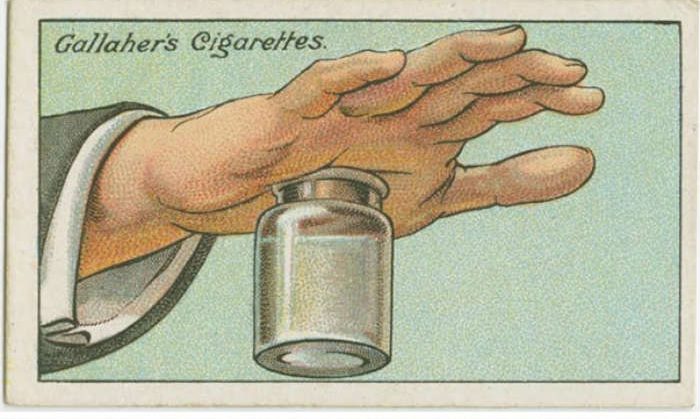
Removing a splinter can be notably discomforting. However, an effective method involves using a bottle with a wide opening, filled almost to the top with hot water. Place the area with the splinter firmly against the bottle’s mouth.
The combination of suction and steam will cause the skin to depress, and the heat helps in easing the splinter out. This approach is not only innovative but also gentle, making the often tedious process of splinter removal much more tolerable.
Hack #2: Easier Bread Slicing
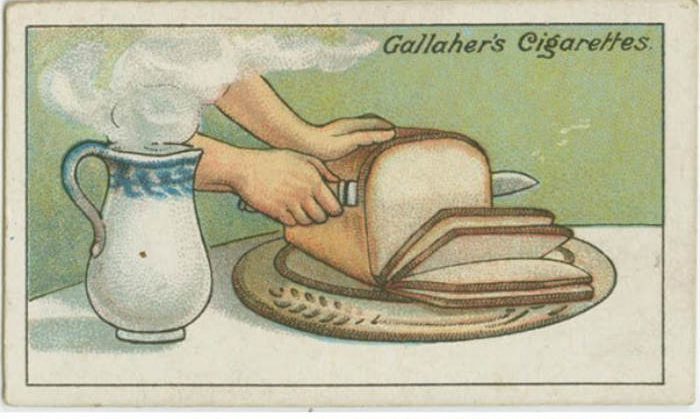
Slicing fresh bread thinly becomes straightforward with this simple strategy. First, immerse the bread knife in hot water until it’s fully heated. After quickly wiping it, use the knife for cutting. The warmth eases the blade through the soft, fresh loaf, enabling even, thin slices. This technique solves the common challenge posed by the softness and stickiness of new bread.
Hack #3: Reviving Faded Blooms
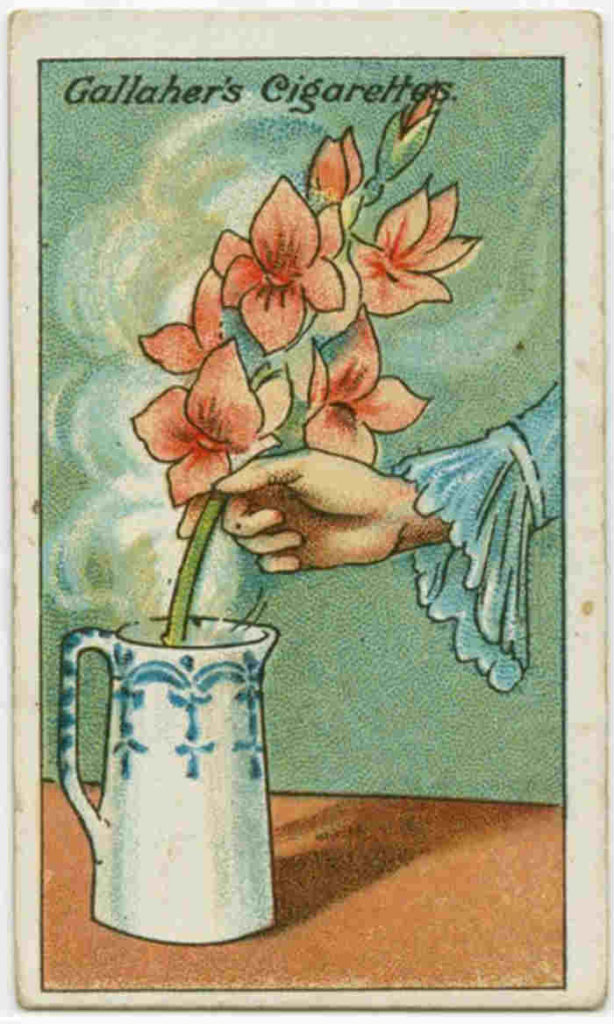
Revitalizing wilted flowers after shipping is simple yet effective. Begin by immersing the stems in hot water, leaving them until the water cools. This process rejuvenates the flowers. Afterward, trim the stem ends and transfer the blooms to cold water, as typically done. This method refreshes and extends the vibrancy of delicate, travel-weary flowers.
Hack #4: Firefighting Solution
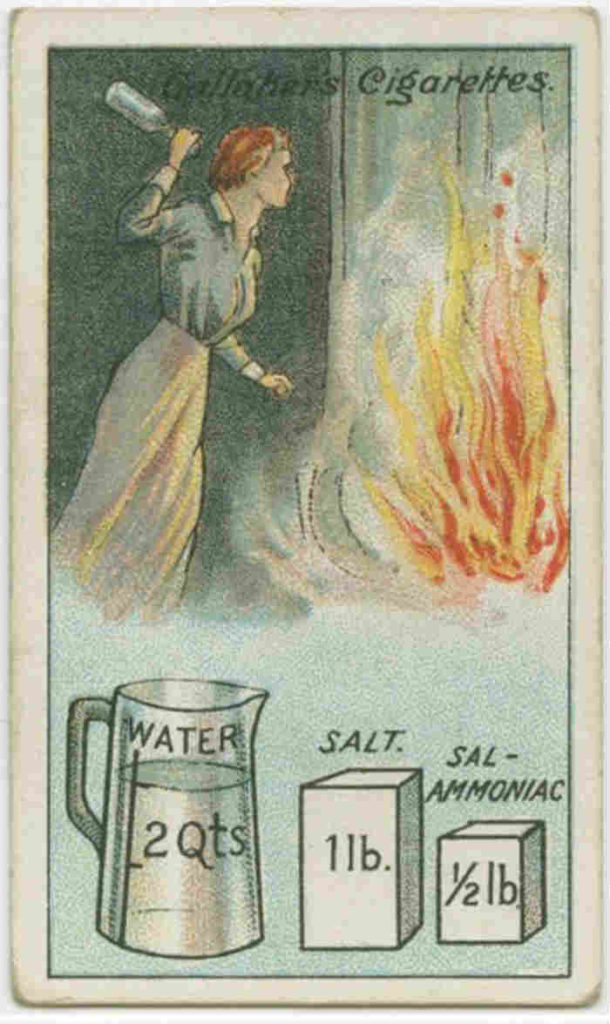
In case of a fire, an effective emergency response can be prepared beforehand. Mix one pound of salt with half a pound of sal-ammoniac in two quarts of water. Store this solution in slender glass bottles, each with a quart capacity.
In an emergency, throwing one or several bottles into the flames could prevent a larger disaster. The contents help suppress the fire, potentially averting severe damage. This primitive fire extinguisher approach provides an initial reactive measure while awaiting professional assistance.
Hack #5: Testing the Purity of Butter
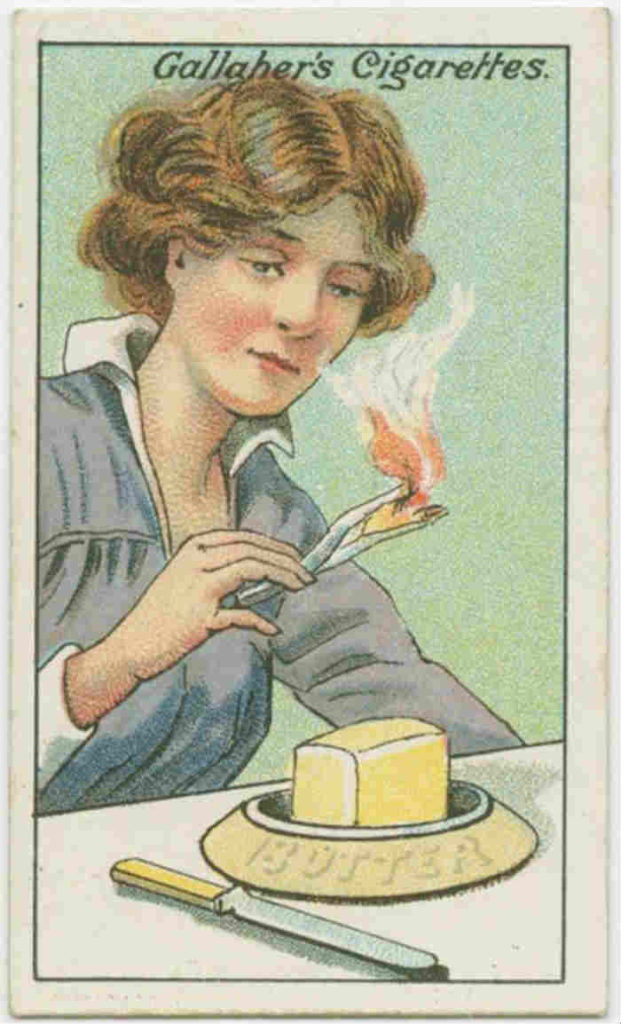
The image illustrates a simple method to distinguish genuine butter from margarine. Spread a small amount of the sample on paper and light the paper on fire. Pure butter produces a faint, pleasant scent when burned, whereas margarine reveals itself through a disagreeable, tallow-like odor.
This test quickly helps identify the authenticity of the product based on its combustion aroma, ensuring you’re informed about the purity of your butter.
Hack #6: Predict the Weather
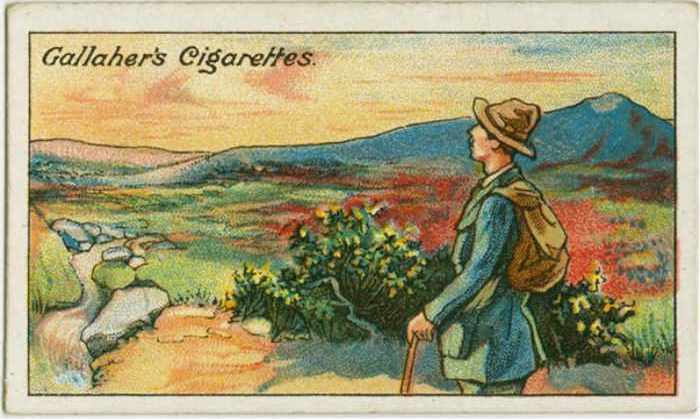
For travelers embarking early, weather prediction can be as simple as observing a distant small cloud. If the cloud expands over time, anticipate potentially rainy, inconsistent conditions. Conversely, a shrinking cloud suggests favorable weather ahead.
This natural indicator serves as a rudimentary yet helpful guide in preparing for the day’s weather, especially in the absence of modern forecasting tools.
Hack #7: Treating a Sprain
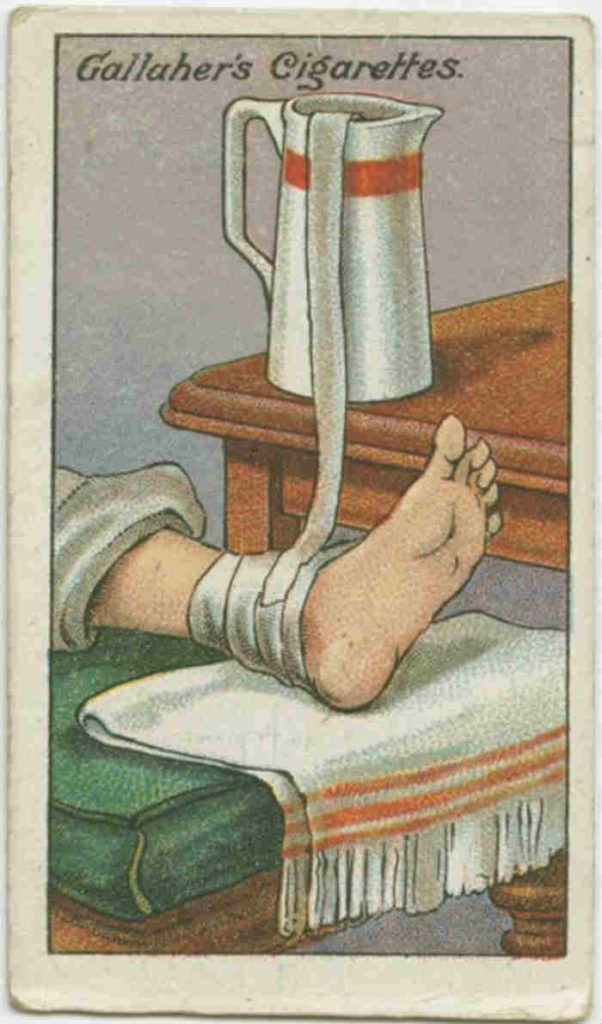
When addressing a sprained joint, first elevate it, then apply cloths soaked in cold water. The accompanying image demonstrates a method to maintain the compress’s dampness without frequent changes. Position a water-filled jug higher than the injured area, using a linen strip to connect the jug to the compress, facilitating continuous moisture replenishment.
As recovery progresses, gentle massages with oil or liniment can be beneficial. This technique ensures sustained cold therapy, crucial for sprain recovery, by using the simplest of setups.
Hack #8: Cleaning Oil Paintings

The images depict an efficient technique for maintaining paintings. Initially, remove dust from the painting, followed by a gentle application of a cut, raw potato’s flat side. Subsequently, remove the residue with a soft cloth. Continually trim the used potato surface to maintain cleanliness during application.
Conclude the process with a light coating of pine linseed oil, enhancing the painting’s finish and preservation. This method underscores a meticulous approach to artwork conservation, utilizing basic yet effective materials.
Hack #9: Boiling Cracked Eggs
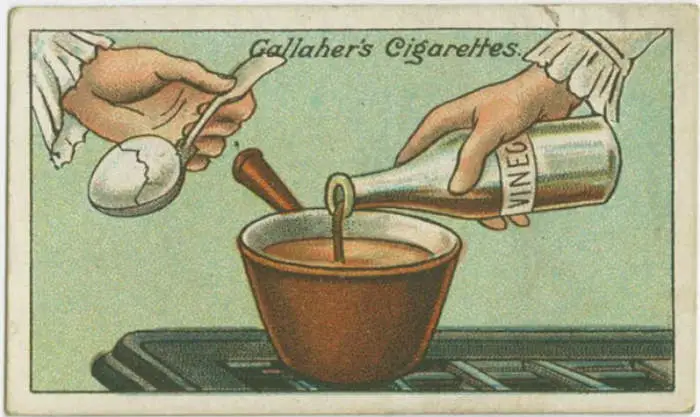
Boiling cracked eggs can be as efficient as cooking intact ones by simply adding a bit of vinegar to the water. This technique ensures the egg contents remain inside the shell during boiling, preventing spillage and resulting in a well-cooked egg similar to an undamaged one.
This culinary tip highlights the use of vinegar to maintain the structural integrity of cracked eggs, reflecting a practical solution within household cooking practices.
Hack #10: Preserving Valuable Vases

To minimize the risk of toppling a precious vase, a proactive measure involves partially filling the vessel with sand. This addition serves as a stabilizer, fortifying the vase’s position and ensuring it remains secure and upright, especially those with smaller, less stable bases.
This technique is instrumental in preserving vases that are top-heavy, safeguarding them from accidental knocks or disturbances. It demonstrates a practical, low-tech approach to protecting valuable items within a household or display setting, emphasizing prevention and stability.
What Do These Facts Represent?
These intriguing life hacks from the early 1900s, once accompanying cigarette boxes, highlight the cleverness of past generations. While certain practices might appear antiquated now, they underscore our ancestors’ resourcefulness. Presently, despite the convenience offered by modern technology and tools, the simplicity and ingenuity of these historical problem-solving tactics remain admirable.
Our contemporary strategies have undoubtedly advanced, but reflecting on these inventive solutions from the past provides valuable insights into the timeless human capacity for creativity and adaptability in overcoming everyday hurdles.
Why Is It Important to Understand Life Hacks from the Past for a Better Present?
Understanding life hacks from the past is more than a nod to nostalgia; it is an essential acknowledgment of the ingenuity and resilience of human problem-solving that continues to be relevant today.
These historical life hacks, precursors to our modern-day shortcuts for convenience and efficiency, highlight several reasons why they remain significant in contemporary times.
Revisiting traditional life hacks underscores the principle of simplicity in problem-solving. In a time before digital solutions and high-tech gadgets, people relied on straightforward, often ingenious methods to make their lives easier.
In our current age, where solutions are often sought in more complex technologies or expensive interventions, recognizing the efficacy of simplicity can be both refreshing and economically advantageous.

This Site Was Inspired By An Interest in Protecting the Environment:
We had the privilege and joy of learning from Dr. Charlie Stine who instilled a love for the natural world through incredible field trips with the Johns Hopkins Odyssey Certificate program in Environmental Studies. At the time, the program was endorsed by the Maryland Department of Natural Resources. Sadly, after Dr. Stine retired, the program was phased out. We hope that we honor his legacy by shining a bright light on environmental issues and sharing good news about the success of various conservation programs when possible.


